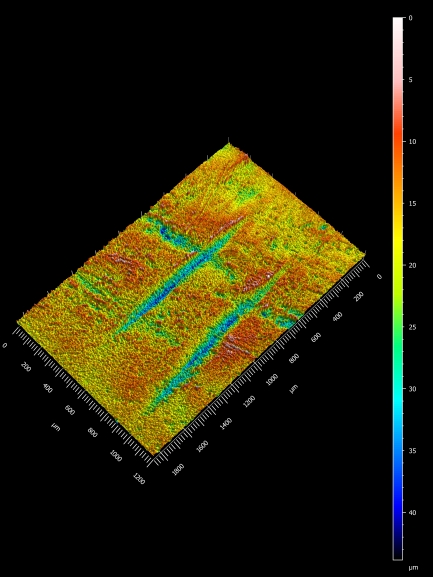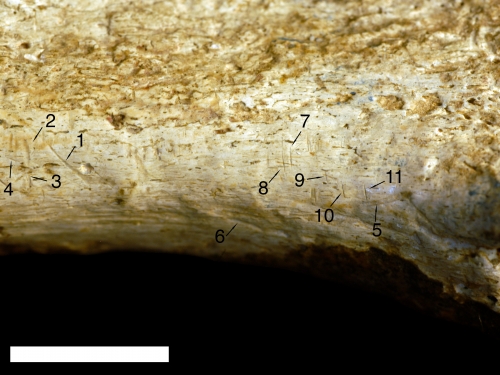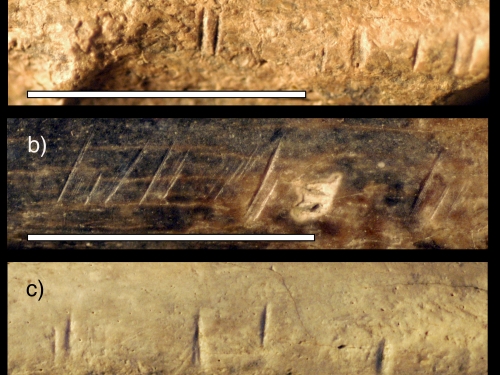3D model of marks 7 and 8 identified as cut marks. (Image courtesy Michael Pante)
In a new study published today, June 26, in Scientific Reports, Smithsonian’s National Museum of Natural History paleoanthropologist Briana Pobiner and her co-authors describe nine cut marks on a 1.45 million-year-old left shin bone from a relative of Homo sapiens found in northern Kenya. Analysis of 3D models of the fossil’s surface revealed that the cut marks were dead ringers for the damage inflicted by stone tools. This is the oldest instance of this behavior known with a high degree of confidence and specificity.
Pobiner sent molds of the cuts—made with the same material dentists use to create impressions of teeth—to co-author Michael Pante of Colorado State University. She provided Pante with no details about what he was being sent, simply asking him to analyze the marks on the molds and tell her what made them. Pante created 3D scans of the molds and compared the shape of the marks to a database of 898 individual tooth, butchery and trample marks created through controlled experiments.
The analysis positively identified nine of the 11 marks as clear matches for the type of damage inflicted by stone tools. The other two marks were likely bite marks from a big cat, with a lion being the closest match. According to Pobiner, the bite marks could have come from one of the three different types of saber-tooth cats prowling the landscape at the time the owner of this shin bone was alive.




